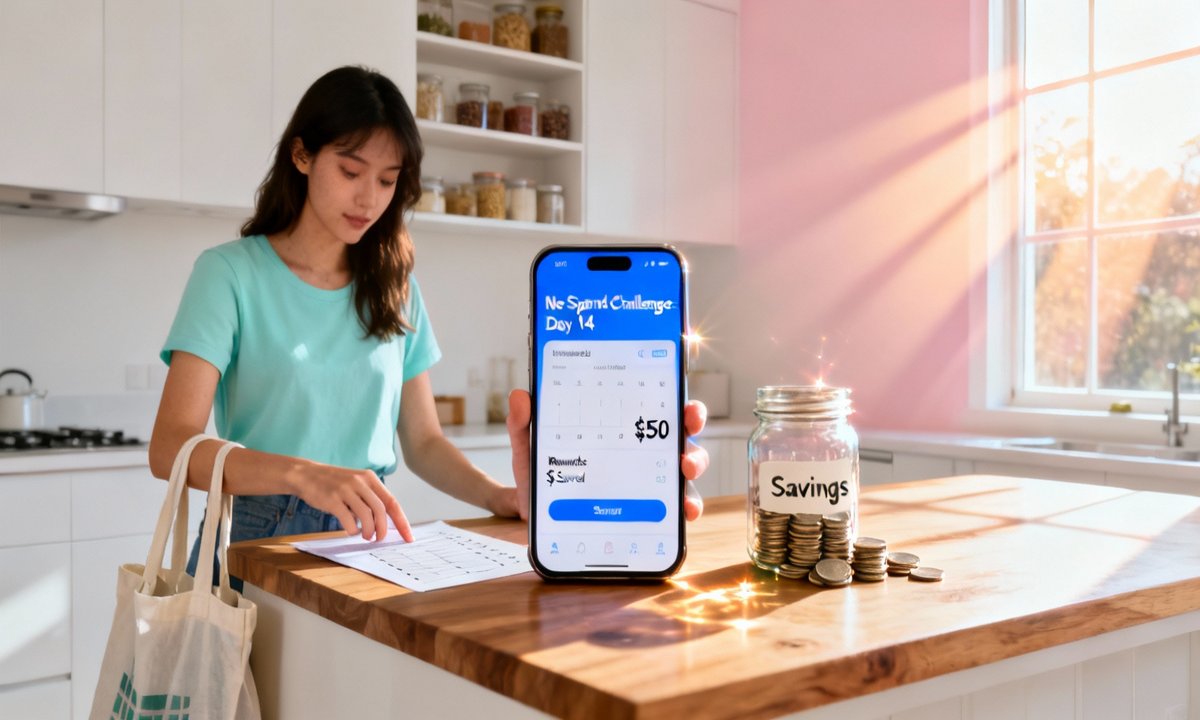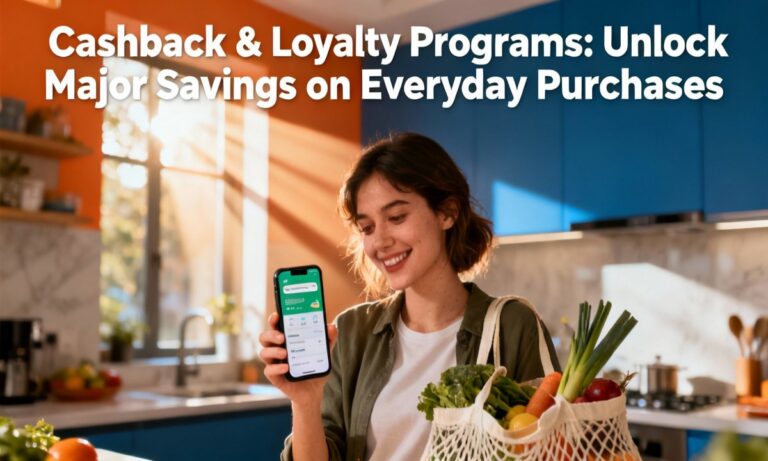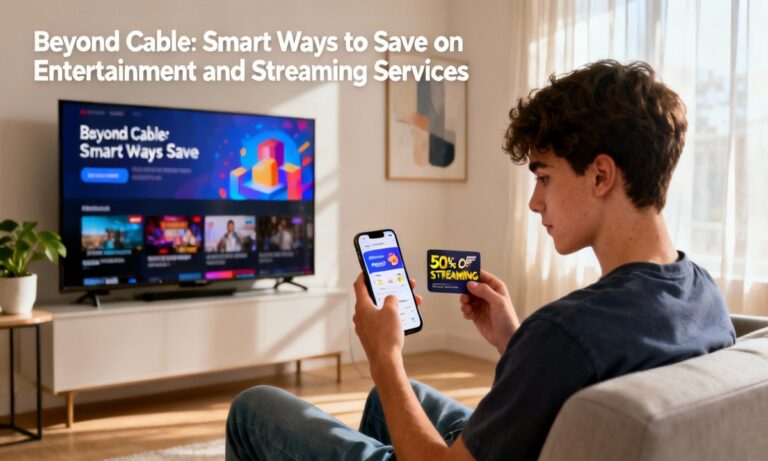Have you ever felt as though your spending habits are on autopilot, guiding your decisions without conscious thought? Embracing a no-spend challenge can provide a powerful reset. This experience not only helps you save money but also encourages a fresh perspective on what truly holds value in your life. As interest in mindful spending grows across the U.S., now is an opportune moment to explore how such a challenge can benefit your budget and your overall mindset.
Understanding the No-Spend Challenge
A no-spend challenge involves making a commitment to avoid all non-essential expenditures for a predetermined period. This could span a weekend, a full month, or even longer, depending on your goals. Essential costs, such as housing, necessary groceries, and healthcare, are always permitted. The core objective extends beyond simple frugality; it aims to help you regain control, break unhelpful spending patterns, and refocus on your genuine needs, as highlighted by financial insights.
Many participants discover that this straightforward concept can yield remarkable outcomes. You might opt for a classic “no-spend month” or a more focused 30-day no-spend challenge. For those new to the idea, a shorter weekend trial can be an excellent starting point, building confidence for longer endeavors.
Key Benefits of a Spending Freeze
Undertaking a spending freeze offers several compelling advantages. Firstly, it quickly teaches you effective ways to save money. Consistent no-spend months can significantly boost your savings, contribute to reducing debt, and strengthen your financial safety net. Beyond the monetary gains, a profound internal shift often occurs: you become more aware of automatic shopping behaviors and begin to question what truly constitutes an essential purchase, a point reinforced by financial experts.
There’s also a surprisingly creative dimension to the challenge. Individuals frequently report finding enjoyment in affordable or free activities, cultivating a deeper appreciation for possessions they already own. This process often leads to developing a sustainable, resourceful approach to managing money that endures long after the challenge concludes.
What motivates people to embrace this journey? For some, it’s about curbing impulse spending. For others, it’s the clear deadline that finally encourages them to pay off debt and establish robust saving habits, setting the foundation for future financial well-being.
Beginning Your No-Spend Journey: A Step-by-Step Approach
Define Your Financial Aspirations
Before you begin, clarify your motivations. Are you aiming to build an emergency fund, save for a vacation, or simply reduce spontaneous purchases? Precisely defining your financial objectives provides strong motivation and helps maintain focus throughout the challenge. Setting these intentions firmly can guide your actions and decisions effectively, as suggested by personal finance advice.
Examine Current Spending Patterns
Take a close look at your recent financial statements. Distinguish between what is truly essential and what can comfortably wait. Utilizing budgeting tools or following practical advice, such as our guide on auditing recurring costs, can illuminate areas where you might adjust your habits. This review forms the foundation for setting realistic challenge rules.
Establish Clear Guidelines for Spending
Formalize your challenge by setting explicit rules. Essential expenses like housing, utilities, basic groceries, and medications are typically allowed. Luxuries, such as coffee shop visits, new clothing, or takeout meals, are usually paused. Some households might adopt very specific rules, like “groceries only” or “no entertainment” for the duration, making the challenge tailored to their lifestyle.
Choose Your Challenge Duration
If you’re new to the concept, consider starting with a no-spend weekend or a single week to build momentum. If you feel more ambitious, the classic 30-day no-spend challenge can be incredibly rewarding. Each small success you achieve reinforces your confidence and commitment, paving the way for greater accomplishments.
Strategies for Eliminating Spending Temptations
To ensure success, actively make it more difficult to stray from your goals. Unsubscribe from promotional emails that encourage purchases, remove saved payment details from online shopping platforms, and consider leaving your credit card at home for the duration of your challenge. Creating this kind of “friction” helps prevent impulse purchases from happening unintentionally, as discussed by frugal living resources.
Additionally, inform your close friends and family about your challenge. The positive social pressure and understanding from your support network can significantly make it easier to adhere to your new spending commitments, providing a valuable layer of accountability.
Actively seek out enjoyable, free activities and delve into existing hobbies. Take stock of items already in your pantry, freezer, and on your shelves that can be “used up” before buying more. A true challenge encourages resourcefulness with what you possess, rather than relying on a surplus stockpiled beforehand.
Recognizing and Managing Money Triggers
Often, we purchase items we don’t truly need due to emotional habits. The psychology of spending habits reveals how stress, boredom, or even advertisements can subtly influence an urge to spend. Keeping a daily journal can be insightful; whenever you feel an impulse to buy something, record what might have triggered that desire. You might uncover surprising patterns that reveal deeper insights into your financial behaviors.
Introduce “friction” into your spending process—small delays or inconveniences that make spending less automatic. Try waiting 24 hours before completing an online purchase, or remove your stored payment information from shopping sites. Consider reflecting on what your biggest spending triggers might be; understanding these can empower you to make more conscious choices.
Tips for Sustained Motivation and Accountability
Build a Support Network
No-spend challenges often become more manageable and enjoyable when undertaken with friends or family. Share your goals, offer mutual encouragement, and even find humor in the small things you miss or the unexpected quirks of your new routine. This shared experience can significantly boost your resolve.
Monitor Your Progress
Utilize a daily log or a printable tracker to monitor your successes. Marking off each day you adhere to the challenge provides visual reinforcement, making it incredibly satisfying to observe a consistent string of positive financial choices accumulating over time.
Strategic Meal Planning
Plan your meals thoughtfully, primarily using ingredients you already have on hand. For further assistance with preparing meals while managing costs, explore resources like Healthy Eating on a Budget and Smart Grocery Shopping. These guides offer practical strategies to help you maximize your existing food supplies.
Embrace Non-Monetary Rewards
Upon reaching significant milestones, such as completing a week, two weeks, or the entire challenge, celebrate your achievements with free rewards. This could be a cozy movie night at home, an engaging family game session, or an enjoyable afternoon spent outdoors. Acknowledging your progress with meaningful, non-financial gestures reinforces your dedication and success.
Customizing Your No-Spend Journey: Challenge Levels
Essentials Only Challenge
This level restricts spending exclusively to housing, utilities, groceries, transportation, and healthcare. All other categories are paused, encouraging a foundational approach to necessary expenditures.
Groceries Only Focus
With this option, you limit all purchases to basic food items and essential household supplies. It’s an excellent way to scrutinize your food budget and minimize impulse buys at the store.
Entertainment Freeze
Commit to avoiding spending on subscriptions, social outings, events, and any hobbies that incur additional costs. This challenge encourages discovering free forms of recreation and entertainment.
Pantry Utilization Challenge
The goal here is to consume only what you already have stocked in your pantry, freezer, and refrigerator, purchasing only absolute basics as they run out. This fosters creativity in the kitchen and reduces food waste.
Each challenge level can be adapted to suit your family’s unique needs and circumstances. For more creative ideas on reducing expenses, consider exploring the Frugal Living Hacks guide or discovering budget-friendly recipes available year-round.
Inspiring Success Stories
The effectiveness of the no-spend challenge is evident in numerous personal journeys. For example, Ashley successfully completed a two-week challenge, while Jason extended his effort beyond 30 days to a remarkable 64. Another participant, Nicole, reached 28 days, and Jen chronicled a month-long commitment that significantly aided her in paying off debt. These individuals, despite facing various temptations, not only accumulated savings but also gained invaluable skills in mindful spending.
A guiding principle shared by many successful participants emphasizes the importance of clear rules: “We like to write the ground rules we’ve decided down on paper so we can all refer to them. We don’t allow ourselves to ‘stock up’ on things beforehand as it feels a bit like cheating,” as reported by frugal living enthusiasts. This underscores the commitment to the challenge’s true spirit.
Navigating Common Obstacles
Avoiding Excessive Strictness
While commitment is key, allowing a degree of flexibility for genuine emergencies or truly unforeseen needs can prevent discouragement. Remember, the aim is progress, not perfection.
Resisting “Stock-Up” Purchases
A crucial pitfall to avoid is making large “just in case” purchases right before the challenge begins. This practice undermines the core purpose of a no-spend period, which is to encourage resourcefulness and reduce consumption.
Seeking and Utilizing Support
Attempting the challenge in isolation can be difficult. Engaging others, whether friends or family, for encouragement and shared accountability significantly increases your chances of success. A strong support system can make a world of difference.
It’s natural to experience a slip-up or a particularly challenging day. When this occurs, avoid self-criticism. Instead, reflect on the situation, learn from it, and reset your intentions without guilt. Every attempt, regardless of minor setbacks, strengthens your financial discipline and builds resilience.
Valuable No-Spend Challenge Resources
To further support your journey, several helpful resources are available. You can easily download a free no-spend tracker and printable rules sheet, offering practical tools to organize your challenge. Consider signing up for a specialized challenge email series, designed to provide weekly motivation and expert tips directly to your inbox, keeping you inspired and informed.
For more in-depth strategies and guidance, you might explore “The No-Spend Challenge Guide” by Jen Smith, which offers comprehensive insights into managing your finances effectively. Additionally, the PNC resource page provides further inspiration and information to enhance your understanding and success in this endeavor.
Are you prepared to advance your financial management skills? Master Your Budget with our comprehensive toolkit, designed to guide you towards debt-free living. Furthermore, if you are committed to cultivating positive money habits consistently, explore our innovative ideas for saving at the supermarket and practical tips for living frugally throughout the year, ensuring lasting financial health.
We invite you to share your experiences and insights. What do you identify as your biggest spending trigger? Join the conversation in the comments section below and connect with a community focused on mindful spending!
Conclusion: Charting Your Path to Financial Freedom
Embarking on a no-spend challenge is much more than a temporary strategy for saving money; it represents a significant opportunity to redefine your relationship with personal finance. This journey allows you to uncover creative, less stressful methods for achieving your financial aspirations. Whether you opt for a complete no-spend month, a sequence of challenging weekends, or customize the rules to fit your family’s unique situation, every deliberate step forward is valuable.
The true benefit extends beyond the immediate monetary savings. It encompasses the enduring habits of mindful spending and deep resourcefulness that you will cultivate throughout the process. These skills contribute significantly to long-term financial well-being. Take advantage of the free trackers, actively share your progress, and continue to fuel your collective journey toward genuine financial freedom. This collaborative approach can make the challenge more rewarding and sustainable.
Are you ready to begin your challenge? Download your free no-spend tracker, subscribe for regular updates, and share your progress in the comments!





